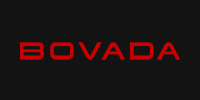 Recently, USPoker.com’s and 4Flush lead writer John Mehaffey wrote an article detailing why subscription based online poker sites haven’t worked and won’t work, and why the rake model is the right model for poker.
Recently, USPoker.com’s and 4Flush lead writer John Mehaffey wrote an article detailing why subscription based online poker sites haven’t worked and won’t work, and why the rake model is the right model for poker.
This is actually a discussion John and I have been having, and while I agree with most of his points (I’m pretty much playing the role of devil’s advocate in this article), I can also see the potential for a subscription based online poker room to make it, and actually thrive, under the right conditions.
Don’t get me wrong, I’m certainly not deluding myself as to the difficulty of making a subscription site happen. In fact, my theory is that if a subscription-based site was already up and running it would be profitable and be able to compete with, if not outpace, sites using a rake model, but that it’s a nearly impossible business to build from the ground floor.
Starting a subscription based poker site would take a lot of capital, an incredible marketing team, and patience and thus far the attempted subscription sites have fallen well short on all of these fronts.
To clarify: This does not mean I think a subscription based site will be softer, or more player-friendly than a rake based site. This argument is about a subscription based site from the operator’s end.
The health club industry as a successful subscription based model
To paint the picture of the perfect non-rake model I’ll use the Health Club industry, an industry I know pretty well, having worked in and managed several health clubs in my more youthful days.
Now, here is a little secret you probably don’t know about health clubs: If every member of a health club used the facility the place would fall apart from wear and tear on the equipment, it would be overcrowded to the point people would find a new gym, and would probably shut its doors no matter how many members it had. Basically health clubs want you to join, but they don’t want you to show up.
Paid in full memberships
When I first started working in the industry the business model was to get members to sign up for year-long contracts, paying the entire fee up front. Since most gym-goers don’t last (like most new poker players don’t), you wanted to get them to commit for as long a term as possible, knowing you will probably only see them for a couple weeks.
Now, before you call me callous, the person signing you up at the gym wants you to hit every fitness goal you have. Nothing made me happier than a person getting in shape. But we are realists; most of you aren’t going to accomplish shit.
Now, when a person signed up for a year the hope was they would either commit and become a loyal customer, or rejoin the following year with the same ambitions.
Monthly payments
Then a new model became available that changed everything, monthly automatic recurring payments.
These monthly payments didn’t have the same impact on your ledger sheet as a $400 check for a 1 year membership, but they proved to be a much better, consistent business model in the long run.
When a person’s yearly membership was up for renewal it’s a tough sell when they haven’t been in the gym for nine months –especially if it was their second, third, or ninth time doing that. On the other hand, the recurring payment gives the person a chance to say, “I got to go back in the gym” every single month they see the $30 charge. Whether they do or not is a different story.
Their commitment is no longer $400, it’s just $30 (obviously these are low numbers for a gym membership in some areas) and “I can always cancel next month if I don’t go.”
Additionally, by attaching a one-time up-front fee you the person just lets the recurring payment continue since cancelling and starting new three months later means paying the up-front fee again.
Monthly plans are generally cheaper, but you get a longer lifespan out of each customer. More importantly, a lot of these customers don’t use their membership, which means no wear and tear on the equipment, less staff, and so on. These members are essentially subsidizing the people who are in the gym two hours a day and use every perk of their membership.
But there are ways to monetize them as well, as I’ll explain in a little bit.
My proposal
Health clubs and poker sites are certainly an apples and oranges comparison. People don’t simply casually join an online poker site, and the ones who do just want to play poker and not deal with a subscription.
But we can use the basics from the health club industry to create a profitable subscription-based online poker room.
Here is what a subscription based online poker room would have to do.
Offer free bankrolls to eliminate a player’s first three months of fees
A subscription site has to appeal to casual players, but casual players don’t want to sign up for a fee based poker game, they just want to play poker. They would rather get 1,000 tiny cuts from the rake than that noticeable one-time gash that requires stitches.
But getting new players is extremely important, and one of the best ways is through free bankrolls. You could tie cash outs to having an active subscription, so players with funds left in their account can then sign up for a monthly subscription.
Outreach to experienced players is a must
Subscription based sites would be extremely appealing to a winning player as a monthly subscription is much cheaper than the amount of rake they are doling out every month. But more appealing to winning players are beatable games at stakes significant enough to matter.
So far the subscription based sites that have launched have only figured out how to do one of those two things. The idea of drastically reduced fees (in the form of rake) is appealing, but the lack of games for anything but trivial amounts will never attract serious players, which is why we need to hand out all those free bankrolls.
Offer different subscription plans for different stakes
A subscription-based poker site would need to offer low monthly subscriptions (figure about $10) to continually entice new players, but these low-tier memberships should only offer the player limited access, perhaps games up to $100 buy-ins and no more than 1,000 hands in a month. Plans could increase from there based on the stakes and volume players want to put in.
Offer upgrades
Now, if a player signs up for the tier 1 membership for $10 they should have the opportunity to upgrade to Tier 2 or Tier 3 if they hit their cap during the month –with a slight markup of course.
Monetize the high-volume players
In addition to having the players that rarely play subsidize them; high-volume players are just like gym rats in that you can sell them other items related to their passion… in this case poker.
In a gym these are the people that buy energy drinks, protein shakes, t-shirts, lifting equipment, personal training, tanning, you name it. So, theoretically a poker site can do the same thing by offering other monthly services that are equivalent to sharkscope or pokertracker. Or having an affiliated coaching website, or selling other poker related products from sunglasses to hats to magazine subscriptions.
Summary
To succeed a subscription based would have to build up a casual player base large enough to attract more consistent players (using the money from the subscriptions of players who play little to no poker every month) which will in turn attract high-volume winning players that will see the benefit of a reduced rake/fee.
Unlike a rake-based site, once a player busts, and for all intents and purposes stops playing poker, their value to the site does not disappear, as a certain percentage will not cancel their memberships.
100% up to $3,000 Bonus
Bovada is our most recommended ONLINE CASINO and POKER ROOM for US players with excellent deposit options. Get your 100% signup bonus today.


Leave a Reply
You must be logged in to post a comment.